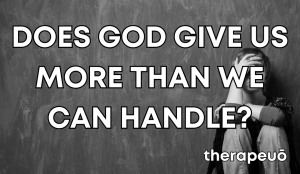
Understanding Step 5: Confession

The post Understanding Step 5: Confession appeared first on Kingdom Revolution.


The post Understanding Step 5: Confession appeared first on Kingdom Revolution.


The post Understanding Step 4: Moral Inventory appeared first on Kingdom Revolution.


The post True or False: God Doesn’t Give Us More Than We Can Handle appeared first on Kingdom Revolution.


The post Understanding Step 3: God appeared first on Kingdom Revolution.


The post Understanding Step 2: A Power Greater Than Me appeared first on Kingdom Revolution.


A look at Step 1 of the 12 Steps. Do you feel powerless over your addiction, alcohol or behavior? Start here.
The post Understanding the 12 Steps: Step 1 (Honesty) appeared first on Kingdom Revolution.